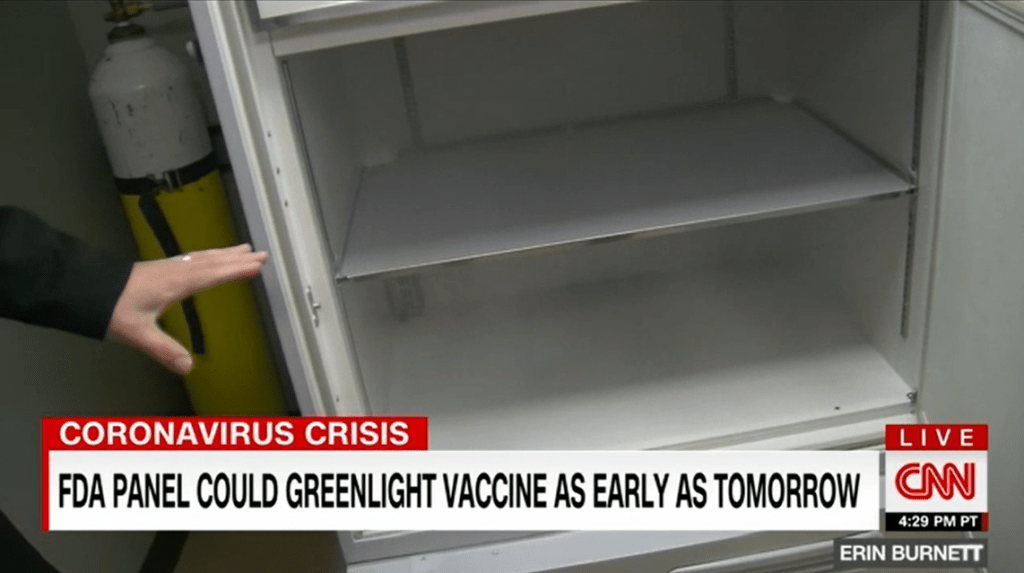The U.S. government promised to give 20 million doses of coronavirus vaccine to the American people by the end of 2020. However, when the last day of 2020, the actual vaccination number stopped at 2.8 million doses.
Many American media are surprised: What exactly caused the federal government to publicize the vaccine “Walteration” into “slow motion”?
Organized chaos, separate battles
According to the data of the U.S. Centers for Disease Control and Prevention on December 31, 2020, the number of coronavirus vaccines distributed in the United States is 12.4 million, while only 2.8 million doses have been inoculated.
The distribution of vaccines and vaccinations have obviously been hindered in some links.
According to the analysis of the U.S. media, part of the reason may be that it is currently in the traditional New Year holiday season, with health agencies taking a break, and many specific tasks for vaccine distribution and vaccinations (such as scheduling and staffing) have to be done by local health officials and hospitals.
U.S. President Trump sent a special message on social platforms on December 29, 2020 local time to distinguish the responsibilities of the federal government and the state governments: “After the federal government transports the vaccine to designated areas, the states are responsible for the distribution and vaccination.”
Some industry insiders pointed out that transportation is only the easiest step in the vaccination process, and distribution of vaccination is the most difficult part.

Even if the federal government only delivers, regardless of the distribution of vaccinations, federal government officials are also “mustled accounts”.
At the December 30, 2020, press conference, Gustave F., logistics director of the federal vaccine Operation Warp.) said, “His team is not clear why these delays have occurred.” He said that the CDC is collecting data to better understand the reasons for the slow progress in vaccination.
Local health departments are full of bitter water. It is only that the epidemic prevention and control work has overwhelmed them. “We are not only in charge of vaccination, but also in charge of a range of COVID-19 testing, contact tracing and other epidemic prevention efforts,” Gayles, a health official in Montgomery County, Maryland, told the U.S. media.
The health department has long been overstretched and has to recruit temporary replacements. Whenever a new batch of vaccines arrives, Gales’ team races against time to reach out to those who are eligible for vaccinations to get them out as soon as possible.
Texas is a similar scene. Health officials said that the state has vaccines, but the distribution speed is slow, mainly because of the surge in confirmed cases of COVID-19, hospitals are busy treating and have no time to take care of vaccinations.
Texas Governor Abbott said on December 29, 2020 that a considerable proportion of the vaccines distributed across Texas are still idle on the shelves of hospitals.
Due to the lack of coordinated organizations of the federal government, the vaccination work in the United States is basically in a state of leaderlessness and fragmentation.
Asshish Jha, dean of the School of Public Health at Brown University, believes that the current government’s arrangement is unreasonable.
To leave local health officials and hospitals responsible for vaccination is to entrust the most difficult work to the least resourced and powerless group of people.
Institutional barriers affecting vaccination efficiency
In addition to the lack of coordination, the efficiency of vaccination in the United States is also constrained by many factors, such as institutional obstacles.
At present, the widely distributed coronavirus vaccine in the United States must be stored at ultra-low temperatures at -75 °C, which poses a challenge to small hospitals and institutions without specialized refrigeration equipment.
The Association of Immunization Administrators, which has been helping states develop vaccination plans, said, “This COVID-19 vaccine is not suitable for mass vaccination because it has very, very specific storage and handling requirements,” said Claire Hannan, the agency’s director.

However, many countries are more effective in vaccination than the United States. In response, Hannan pointed out that these countries have centralized health service systems, and the United States does not have such a national health infrastructure, which causes many specific problems.
For example, to carry out vaccination, a legal agreement must be signed between the federal and state governments; nurses need to participate in a special project to get the vaccine; and also need to investigate which institutions have ultra-cryogenic refrigerators for storing coronavirus vaccines. Therefore, Hannan believes that “the American health care system cannot vaccinate 300 million people in four months.”
Because of the problem of the decentralized health care system, some grassroots workers can only find ways to distribute vaccines themselves.
Every five days, Richard Bates, a doctor in Michigan, will travel more than 200 kilometers in his car to take dozens of doses of vaccines to township hospitals in the northern part of the state, which takes three hours one way. “I drove past a lot of small towns and I was wondering how we would get so many people vaccinated,” Bates told the media.
As of December 31, 2020, the United States has detected mutant COVID-19 in two states, and the number of new deaths has exceeded 3,700 for two consecutive days. The accelerated deterioration of the epidemic has put more urgent pressure on vaccination efforts.
U.S. President-elect Biden said on December 29, 2020 “national vaccination will take years” if it is at the current level of vaccine management under the Trump administration.
American public opinion is also very dissatisfied with the current chaos of vaccination. William Rivers Pitt, an American best-selling author, wrote: “This country is exhausted.
At least now, as the federal government’s leadership gap persists, we have to rely mainly on ourselves: wear masks, stay at home as much as possible, wash hands, get sick or Self-isolation after exposure to the virus. Don’t go out on New Year’s Eve if you can.


